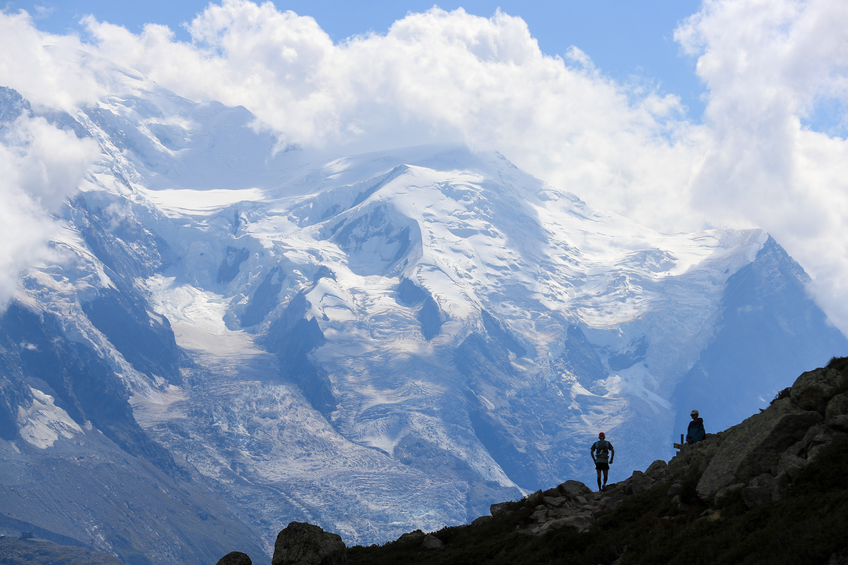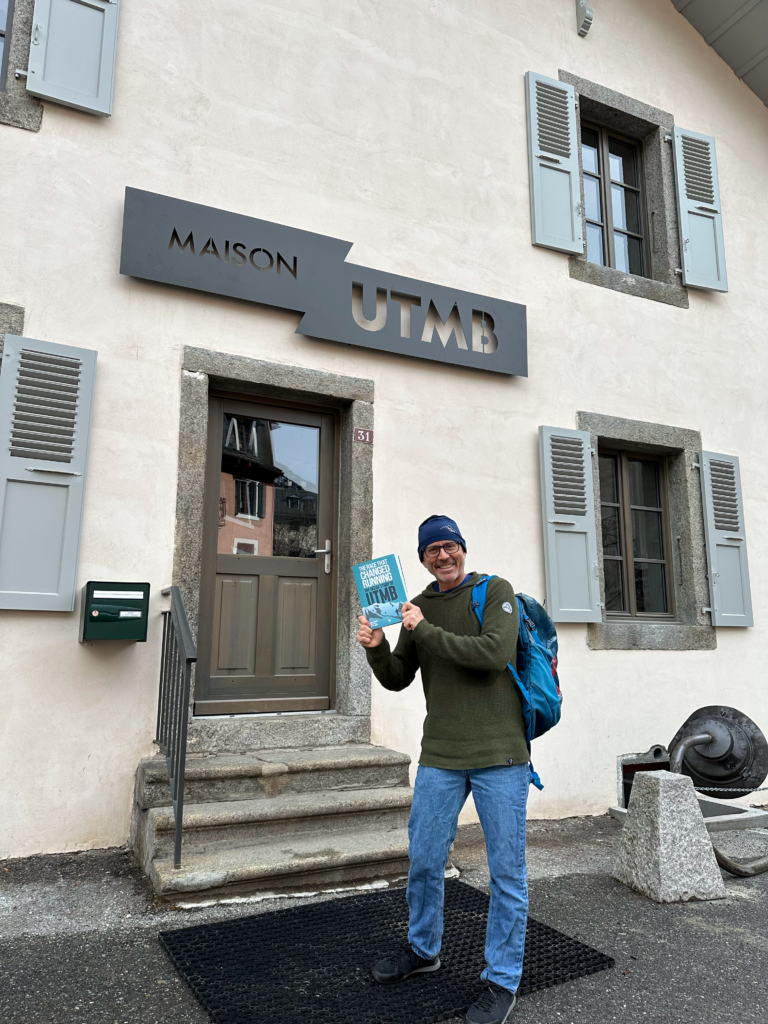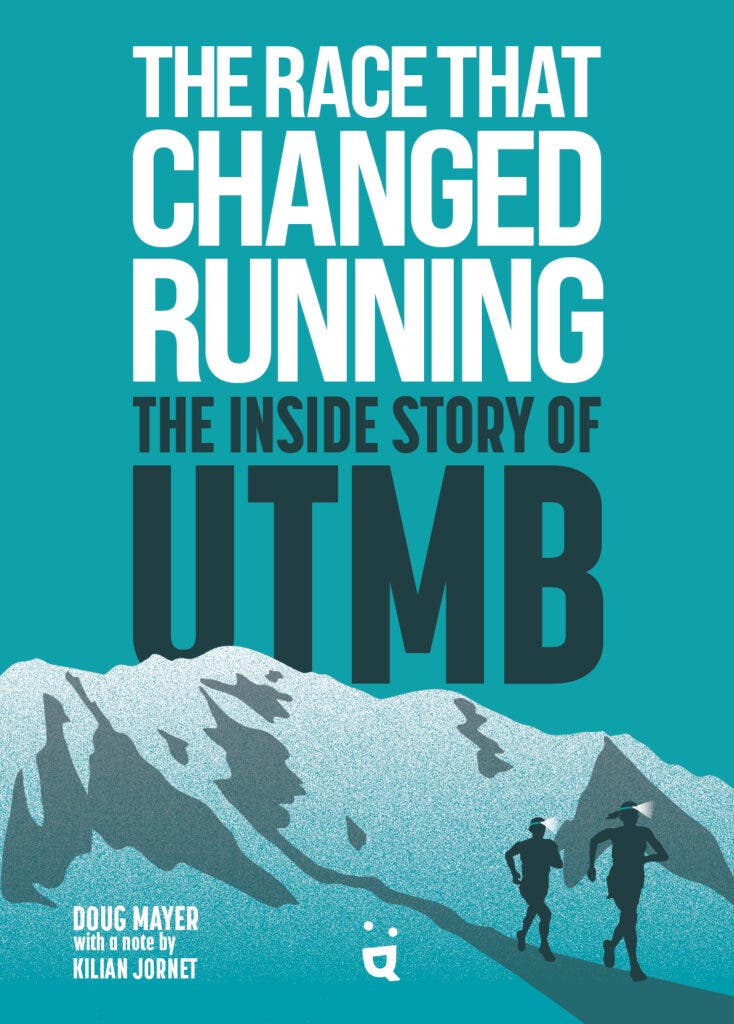Book Review: The Race That Changed Running

(Photo: UTMB)
When Krissy Moehl first told me years ago about a crazy new race she had just won in Europe—a 100-miler that started and finished in Chamonix, France, and circumnavigated 15,777-foot Mont-Blanc—I was very intrigued.
As a journalist and trail runner, I was interested because, at the time, very few U.S. ultrarunners had raced across the pond. A handful of American trail runners had made their mark in the famous races of the sub-ultra mountain running circuit in Europe, but at the time there weren’t really any compelling ultra races overseas. Back then, the Western States 100 in California was arguably the world’s most well-known ultra-distance trail race and it was just starting to attract more overseas competitors.
That was 20 years ago and things have obviously changed quite a bit. And a lot of the transformation is due to the rise of that very race that Moehl won back in 2003. Although Catherine and Michel Poletti, the founders of the Ultra-Trail du Mont-Blanc, didn’t set out to change the sport, the inspiring energy and authentic vibe of the inaugural event came at a time when ultrarunning was on the verge of becoming a global sport and quickly became a catalyst to the growing international community of the sport.
Fast-forward to 2023 and UTMB is not only one of the biggest trail running events in the world, it’s also the most prominent. Now on the verge of celebrating its 20th anniversary, the weeklong race festival (which includes numerous subsidiary events like the CCC 100K, OCC 50K and TDS 145K) has for years attracted both the world’s top elite trail runners and many of the most passionate and committed recreational athletes alike, all of whom have been interested in testing their mettle on the stunning terrain of the trails around the Mont Blanc Massif.
RELATED: UTMB: A Fanfare for the Common Runner
As Dylan Bowman has famously said, UTMB is “the Super Bowl of trail running.” Since its inception, the weeklong festival of races in Chamonix has been where a passionate and diverse community of people connected to the sport meet every year to engage in authentic trail racing, a shared joie de vie centered around being together in the mountains. That’s the essence of how the event has grown and thrived for 20 years.
But with the rise of the UTMB World Series race circuit over the past two years—essentially an international qualifying series for the championship races in Chamonix—UTMB has begun to attract some criticism that the event is too big, too domineering or disconnected to the grassroots soul of the sport.

The Story Behind UTMB
All of those elements are reasons Doug Mayer, an American journalist, entrepreneur and avid trail runner who lives most of the year in Chamonix, was compelled to tell the complete story of UTMB. In his new new book, “The Race That Changed Running: The Inside Story of UTMB,” Mayer painstakingly tells the story of the race’s origin, the Polettis and many of the athletes who have thrived in it to paint a picture of how and why the weeklong event has become such a pivotal event, not only in trail running but in endurance sports in general. (It drops at U.S. bookstores on June 13, but it’s available on a pre-order basis now.)
Mayer, who started the independent Run the Alps trail running tour company in 2014, was the ideal person to write the book about UTMB, not only because he has a long history visiting and living in Chamonix, but also because he’s run UTMB twice (as well as the CCC, MCC and TDS) and other popular races in the Alps, such as the Mont-Blanc Marathon 80K in Chamonix and the Tor des Geants 330K race in Courmayeur, Italy.
“I wanted to write an honest story about the race, because I was curious about how it started and all of these things I’ve heard through the years,” says Mayer, 58, who grew up in New Hampshire. “I just wanted to sit down with the Polettis and dig into the whole story because it had never been fully told. For the most part, I think the race really grew itself. I mean, it’s obviously a wonderful idea running through three countries on the way around Mont Blanc, and that’s still at the core of it all to this day. But I really want to find out what was behind their vision, what the challenges were and how it got there.”
Through his curiosity, passion for trail running and thoughtful storytelling, Mayer cobbles together not only the detailed history of the race from its late-1980s roots in multi-stage club relay races to the launch of the first singular race that followed the Tour du Mont Blanc trail and eventually the rise of the multiple-race festival and the formation of the UTMB World Series in 2021 through a complex global expansion partnership with Ironman.
Mayer also serves up a historical view of Chamonix and Mont Blanc—how its 18th century mountaineering roots led to the region become the host site of the first Winter Olympics in 1924 and a late 20th century hotbed for a variety rugged mountain sports—and how all of that laid the foundation for the organic rise of trail running in Chamonix in the 1980s and 1990s.
To research the book, Mayer conducted more than 100 hours of interviews—in both French and English—with the Polettis and with dozens of elite athletes and numerous other people connected to the race, the sport or the sporting scene in and around Chamonix since the late 1990s. While Mayer had the cooperation of the UTMB organization in writing the book, he retained absolute editorial control in writing the book. Because of those candid discussions and his journalistic lens, he’s able to tell stories and vignettes about some of the business details, logistics, growth, challenges and even a few controversies of the first 20 years of UTMB.

He digs into the Polettis past, explaining how they met and fell in love as enterprising young university students in the early 1970s, got married, started a family and scrapped to make ends meet in the 1980s after making the conscious decision to live in Chamonix (where Michel Poletti grew up) instead of pursuing lucrative careers and a more comfortable life in the bustling Paris business scene.
Mayer paints a picture of the Polettis as a determined and connected couple whose entrepreneurial spirit led them to owning a record shop in Chamonix and getting involved in the burgeoning sport of paragliding in the 1980s and 1990s (before getting turned off by the ego-inflated hero culture of that sport). Ultimately he suggests that it was the Polettis combination of smarts, ambition, curiosity and passion for mountain life that led to them starting UTMB with their own unique vision of what it could be, which, ironically, has similarities to the backstories of many American trail running race directors who have come on the U.S. trail running scene over the past 25 years.
“Some of the negative ideas that people might have about the Polettis, by and large, I’ve found to be wrong,” Mayer says. “They’re passionate about what they’ve built. They’re entrepreneurs, but they care about the sport of trail running and the people involved in it.
They were open and candid and really willing to share, and especially open to self-criticism. They were the first people to admit, ‘Oh, we made a mistake when we did this.’ Or ‘In retrospect, we would’ve done this differently,’ or ‘This worked out really well, but we got lucky there.’ They’ve continually learned and adapted along the way, especially with the increased attention UTMB has received.”
Mayer weaves together the input of those interviews into a historical story that’s blended with the gritty and glorious sights, sounds and scenes of the modern-day race—specifically the epic 2022 UTMB races won by legendary Catalan runner Kilian Jornet and American transplant Katie Schide—ultimately giving a well-rounded view of what UTMB was, what it is and what it might become. Included in each chapter are specific excerpts from conversations with numerous elite athletes and key figures who have run the races or played a role in their development, including Tim Tollefson, Keith Byrne, Jim Walmsley, Rory Bosio, Corrine Malcolm and Courtney Dauwalter.
Through Mayer’s writing, it’s easy to understand that trail running races in Chamonix (and ultimately UTMB) began with the same dirt-bag, grassroots passion shared by iconic American trail races like the Western States 100, The Dipsea, Mount Marathon, Pikes Peak Marathon and the Hardrock 100. However, it exploded there because the appetite for running a race around Mt. Blanc quickly became an insatiable quest and UTMB had the ability to expand and meet that growing global demand without land agency restrictions that limit American races.
“I feel like the race is very often very poorly understood,” Mayer says. “I think part of that is because, for people who actively participate in trail running, it’s something we all passionately care about on a personal level. It’s a soul sport, and we love it. And so any big change or anything that causes a shift, a little or a lot, can create tension. And if you’re not super secure, it’s easy to feel threatened by that.”
RELATED: Up To Speed: A New Book Illuminates the Understudied Physiology of Female Athletes
The Bigger Picture
Mayer is definitely not a UTMB apologist, and for that matter neither am I. With that initial seed planted by Moehl in 2003 and the passion for UTMB that fellow American Topher Gaylord shared with me during a subsequent four-day hut-to-hut run around Mont Blanc, I have been able to tell stories about the alluring vibe of Chamonix and UTMB races for the past 15 years. While that certainly gave good insight to the spectacle of the event—that some people cherish and others complain about—my experiences running the CCC, OCC and MCC races helped me comprehend the authentic motivation and gritty effort intrinsic to every runner’s personal journey on the trails back to Chamonix.
But it was reading Mayer’s book that put it all together and gave me a complete understanding of what UTMB is all about, and why trail running will continue to thrive with big global events and tiny local events in every corner of the planet. Ultimately what each type of event shares—the community of passionate trail runners who love the personal and shared challenges of running through the natural world—makes them much more alike than they are different.
For the small but vocal collection of ideological dissenters who have been chirping dissatisfaction with the growth and professionalization of the sport or anti-UTMB vitriol recently, my only two bits of advice would be to find a way to get to Chamonix during the race week to actually experience it all on a first-hand basis—ideally by running one of the races there—and, just as importantly, pick up a copy of Mayer’s book as soon as possible.